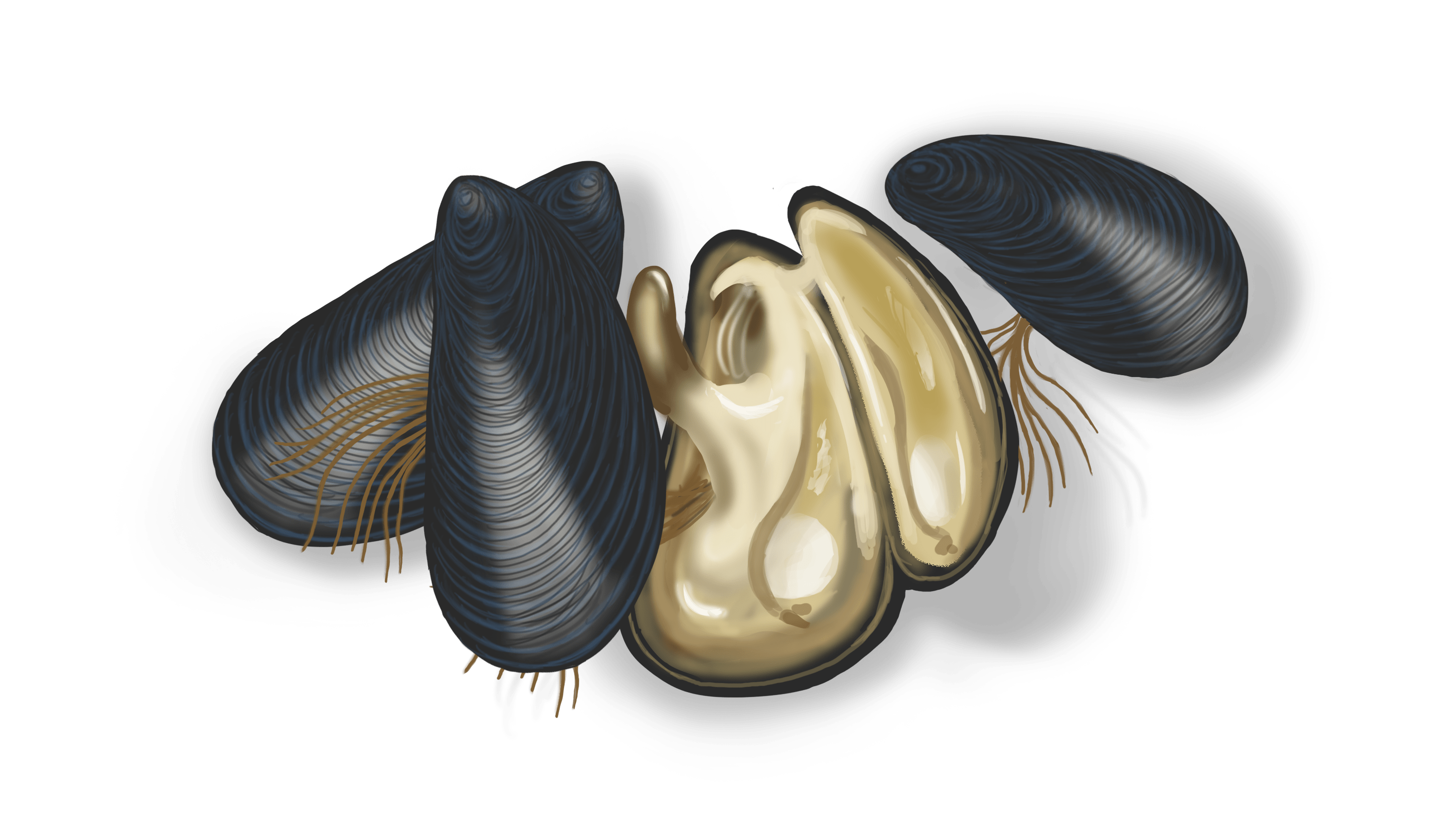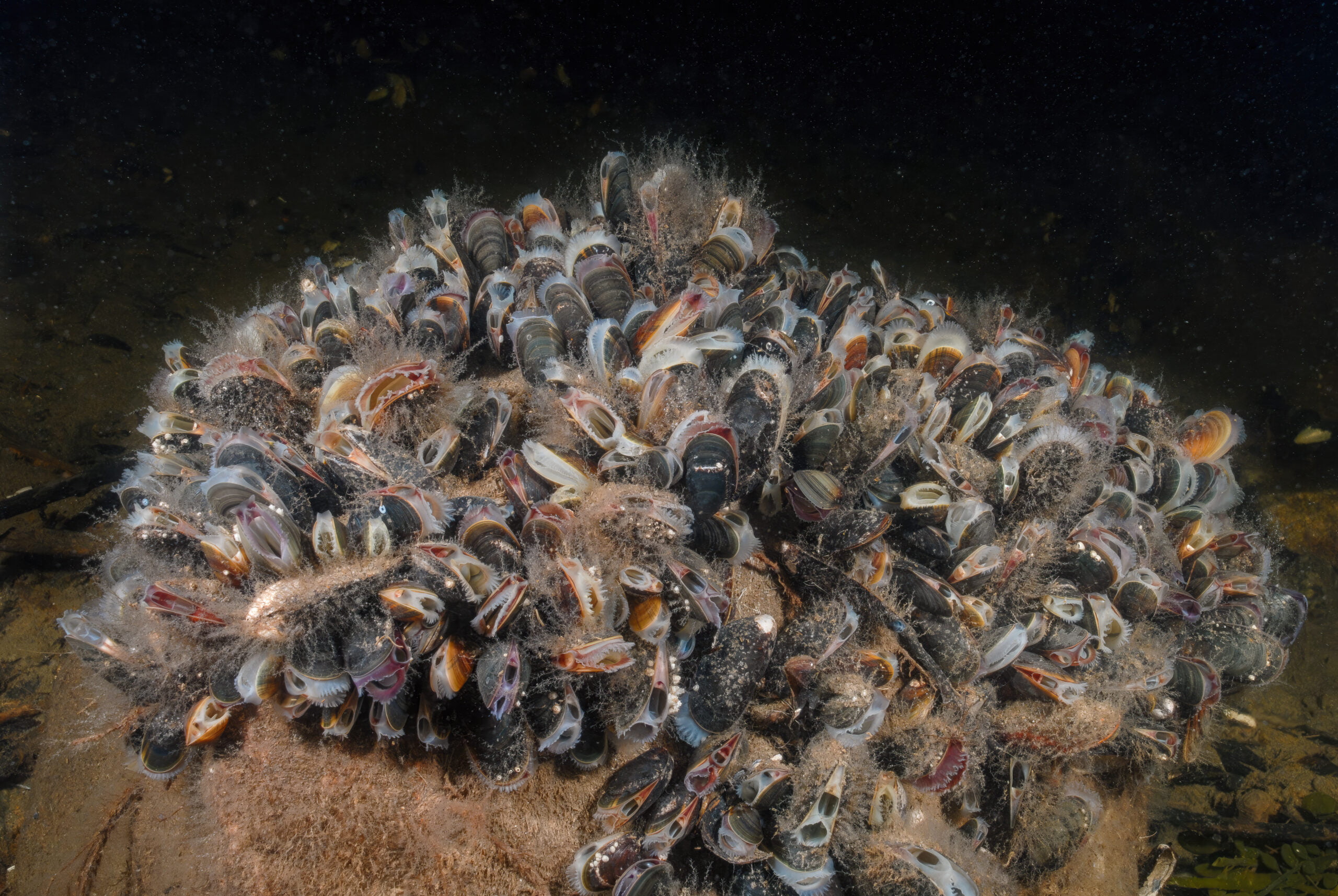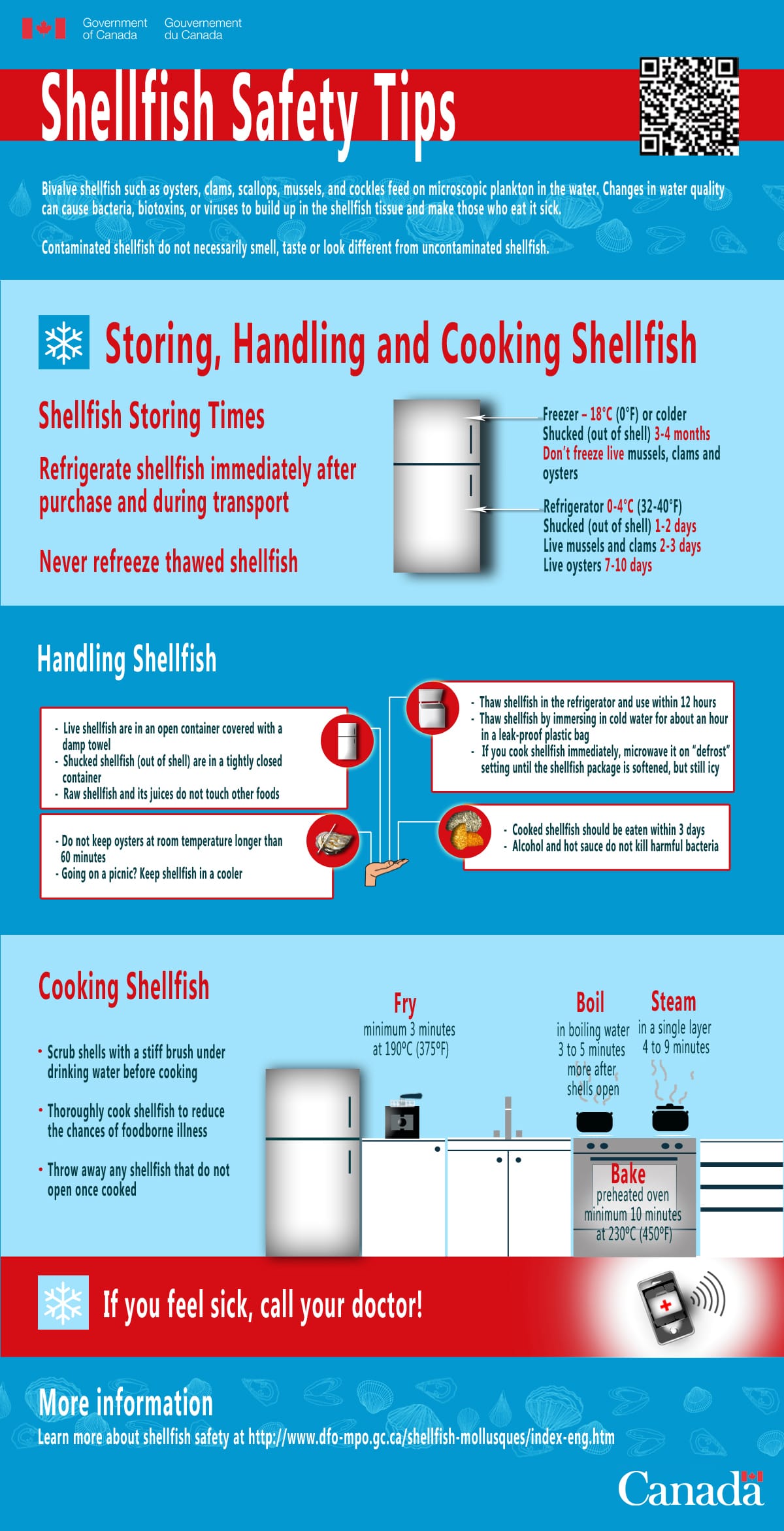Document detailing precautionary measures for shellfish consumption.
Bivalve shellfish such as oysters, clams, scallops, mussels and cockles feed on microscopic plankton in the water. Changes in water quality can cause bacteria, biotoxins, or viruses to build up in the shellfish tissue and make those who eat it sick.
Contaminated shellfish do not necessarily smell, taste or look different from uncontaminated shellfish.
Shellfish storing times
- Refrigerate shellfish immediately after purchase and during transport
- Never refreeze thawed shellfish
- Freezer -18°C (0°F) or colder
- Shucked (out of shell) 3-4 months
- Don’t freeze live mussels, clams and oysters
- Refrigerator 0-4°C (32-40°F)
- Shucked (out of shell) 1-2 days
- Live mussels and clams 2-3 days
- Live oysters 7-10 days
Handling shellfish
- Live shellfish are in an open container covered with a damp towel
- Shucked shellfish (out of shell) are in a tightly closed container
- Raw shellfish and its juices do not touch other foods
- Thaw shellfish in the refrigerator and use within 12 hours
- Thaw shellfish by immersing in cold water for about an hour in a leak-proof plastic bag
- If you cook shellfish immediately, microwave it on ‘defrost’ setting until the shellfish package is softened, but still icy
- Do not keep oysters at room temperature longer than 60 minutes
- Going on a picnic? Keep shellfish in a cooler
- Cooked shellfish should be eaten within 3 days
- Alcohol and hot sauce do not kill harmful bacteria
Cooking shellfish
- Scrub shells with a stiff brush under drinking water before cooking
- Thoroughly cook shellfish to reduce the chances of foodborne illness
- Throw away any shellfish that do not open once cooked
- Fry – minimum 3 minutes – at 190ºC (375ºF)
- Boil – in boiling water – 3 to 5 minutes – more after shells open
- Steam – in a single layer – 4 to 9 minutes
- Bake – preheated oven – minimum 10 minutes – at 230ºC (450ºF)
If you feel sick, call your doctor!
More information: learn more about shellfish safety at http://dfo-mpo.gc.ca/shellfish-mollusques/index-eng.htm


